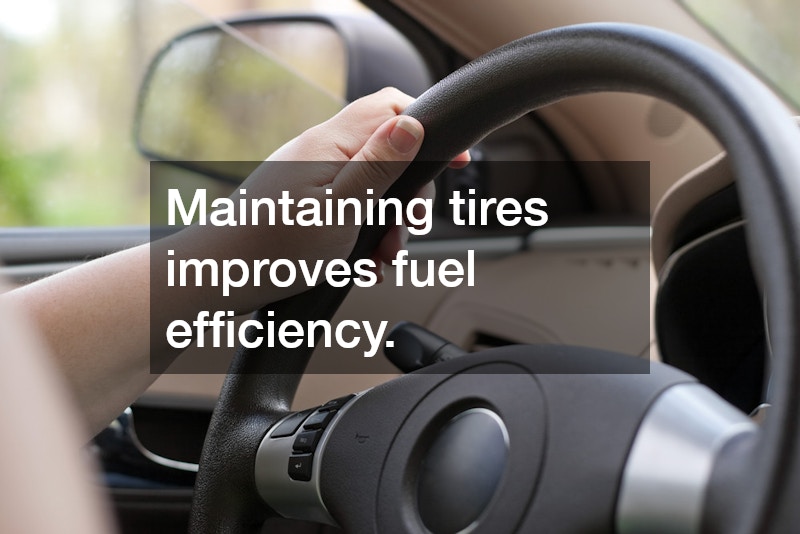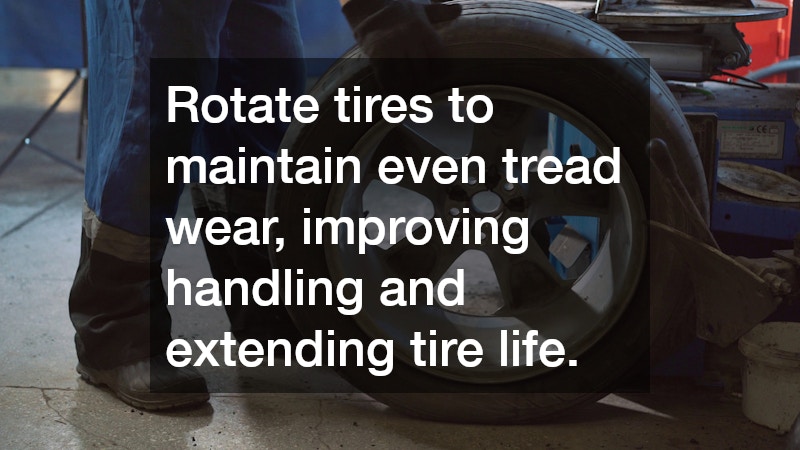Keeping your car running smoothly is more than a matter of convenience—it is essential for safety, longevity, and cost-efficiency. Vehicles today are complex machines with intricate systems that require regular attention. By following expert advice from a reputable car repair shop, drivers can prevent costly breakdowns and enjoy reliable performance year after year.
Understanding common maintenance practices, recognizing warning signs, and knowing when to seek professional help are all crucial aspects of responsible car ownership. From routine oil changes provided by an oil company to specialized services like car glass replacement or auto tinting, taking a proactive approach ensures your vehicle remains in optimal condition. Additionally, being informed about auto repair FAQs can help you make smarter decisions when dealing with repairs or upgrades. In this guide, we will cover essential tips for vehicle maintenance, strategies to extend the life of key components, and insights for choosing the right car repair shop for your needs.
1. How Often Should I Get My Car Serviced?
Regular Service Intervals
A vehicle’s manufacturer outlines recommended service intervals to ensure optimal performance and longevity. These intervals typically range from every 3,000 to 10,000 miles, depending on the make, model, and type of service needed. Routine maintenance encompasses tasks such as oil changes, tire rotations, brake inspections, and fluid level checks. Regular servicing helps prevent minor issues—like worn brake pads, clogged filters, or low fluids—from escalating into major repairs that can be expensive and time-consuming. Additionally, consistent maintenance contributes to better fuel efficiency, smoother handling, and improved safety for both the driver and passengers. Many car repair shops also offer multi-point inspections during routine service, helping to identify potential problems before they become serious.
Importance of Service Records
Maintaining comprehensive service records is essential for vehicle care. Detailed records allow mechanics to understand the car’s maintenance history, including prior repairs, replaced parts, recommended service adjustments, and any car glass replacement work. Tracking windshield, window, or side glass repairs helps technicians identify related issues, such as leaks or sensor malfunctions, and ensures proper integration with other vehicle systems. Service records also protect your investment, as a documented history increases the resale or trade-in value of the car. When visiting a car repair shop, presenting a complete service history—including any car glass replacement—ensures that all maintenance aligns with the manufacturer’s guidelines, keeping your vehicle running at peak performance and maintaining safety standards.
Signs Your Car Needs Immediate Attention
Certain warning signs indicate that a vehicle requires urgent attention. These include unusual engine noises, dashboard warning lights, fluid leaks, overheating, and difficulty in steering or braking. Recognizing these symptoms early is crucial to avoid costly repairs and ensure safety. Familiarity with these issues, as highlighted in auto repair FAQs, empowers drivers to make informed decisions and seek professional help promptly. Timely intervention often prevents minor problems from escalating into extensive mechanical failures, saving both time and money in the long run.

2. What Are the Essential Maintenance Checks?
Fluids and Filters
Maintaining clean and properly functioning fluids and filters is essential for your vehicle’s longevity and performance. Engine oil lubricates internal components, reducing friction and preventing premature wear, while also helping to regulate temperature. Over time, oil breaks down and accumulates debris, making regular oil changes vital. Coolant plays a crucial role in preventing overheating by regulating engine temperature and protecting against corrosion. Brake fluid ensures consistent stopping power, while transmission fluid supports smooth gear shifts and prevents premature transmission wear. A diesel mechanic or qualified technician can recommend fuel system additives that clean injectors and improve combustion efficiency, particularly for diesel engines. Air and cabin filters also deserve attention; clean air filters improve engine performance and fuel economy, while cabin filters maintain air quality inside the vehicle, keeping passengers comfortable and healthy.
Tire Inspection and Rotation
Tires are the only point of contact between your vehicle and the road, making regular inspection and rotation critical. Uneven wear, cracks, or embedded debris can compromise traction and handling, potentially leading to accidents. Checking tire pressure ensures optimal performance and fuel efficiency, while rotating tires according to the manufacturer’s recommendations—typically every 5,000 to 7,500 miles—promotes even wear and extends tire lifespan. Many car repair shop professionals also advise balancing tires and checking alignment during rotations to further enhance handling and prevent uneven wear.
Battery and Electrical System
A vehicle’s electrical system is the backbone of its operation. Batteries lose capacity over time, and terminals can corrode, causing starting problems or electrical malfunctions. Regular inspections of alternators, fuses, and wiring are essential to prevent unexpected failures. A failing battery can strain other components, leading to costly repairs, while faulty electrical systems may impact lights, infotainment, sensors, and safety features. Proactive maintenance in these areas ensures your car operates reliably, avoids inconvenient breakdowns, and supports the effectiveness of all other vehicle systems.
3. How Can I Extend the Life of My Brakes?
Recognizing Brake Wear Signs
Brakes are one of the most critical safety components of any vehicle, and recognizing early signs of wear is essential. Squealing or screeching noises often indicate that brake pads are reaching the end of their life, while grinding sounds can signal that pads have worn down completely, causing metal-to-metal contact with the rotors. A soft or spongy brake pedal may point to air in the brake lines or low brake fluid levels. Pulling to one side while braking, vibrations through the steering wheel, or longer stopping distances are additional warning signs that require immediate attention. Ignoring these indicators not only compromises safety but can also escalate repair costs, as worn rotors or calipers may need replacement. Auto repair FAQs consistently emphasize the importance of addressing brake issues promptly to maintain vehicle safety and performance.
Brake Maintenance Tips
Proactive maintenance helps extend the life of your braking system. Regularly inspecting brake pads, rotors, and fluid levels ensures that minor issues are detected before they become major problems. Cleaning brake components to remove dust and debris improves performance and reduces wear. Additionally, bleeding the brake system periodically can eliminate trapped air, maintaining consistent pedal feel and stopping power. Scheduling maintenance at a trusted car repair shop allows professionals to identify potential issues that may not be immediately noticeable, saving both time and money in the long run.
Choosing the Right Brake Pads
Selecting the appropriate brake pads is vital for safety and performance. High-quality pads from a reputable car repair shop provide better stopping power, durability, and heat resistance. City drivers may prefer ceramic pads for quieter operation and less dust, while high-performance or heavy-duty vehicles often benefit from semi-metallic or performance-oriented pads. Consulting with experts in mechanical contracting or your trusted diesel mechanic can help match brake pads to your driving habits and vehicle type, ensuring optimal safety and longevity.

4. Why Is Tire Alignment Important?
Understanding Alignment Symptoms
Tire alignment is an often-overlooked aspect of vehicle maintenance, yet it plays a critical role in safety and performance. Misaligned tires can manifest in several ways, making it essential for drivers to recognize the symptoms early. One of the most common signs is uneven tire wear, where one side of the tire wears faster than the other. This uneven wear can reduce tire lifespan significantly, forcing premature replacements. Another noticeable symptom is vehicle pulling or drifting to one side while driving on a straight road. This not only affects handling but can also increase driver fatigue during long trips. Vibrations in the steering wheel or unusual squeaking noises when turning may also indicate alignment issues. Auto repair FAQs frequently stress that addressing these symptoms promptly is vital to prevent additional strain on suspension components and maintain safe driving conditions. Ignoring alignment problems can lead to further complications, including damaged shocks, struts, or even steering system issues, which can increase repair costs dramatically.
Benefits of Proper Alignment
Maintaining proper tire alignment offers numerous advantages beyond vehicle safety. Correct alignment ensures even tire contact with the road, enhancing stability, traction, and handling, especially during emergency maneuvers. Proper alignment also contributes to improved fuel efficiency, as misaligned tires increase rolling resistance, forcing the engine to work harder and consume more fuel. Reduced tire wear is another benefit, lowering the frequency and cost of replacements. Professional car repair shops often provide comprehensive alignment services that include measuring and adjusting camber, caster, and toe angles to manufacturer specifications. These services not only correct current issues but also help prevent future problems, protecting the longevity of tires and suspension components. Additionally, proper alignment contributes to a smoother, more comfortable ride by eliminating vibrations and uneven handling.
How Often to Check Tire Alignment
Routine alignment checks are crucial for vehicle maintenance. Most manufacturers recommend checking alignment every 12,000 to 15,000 miles. However, additional checks may be necessary after suspension repairs, tire replacements, or if the vehicle experiences an accident, hits a curb, or suffers car hail damage. Hail can dent panels and affect the vehicle’s frame or suspension components, potentially causing subtle misalignment that impacts handling and tire wear. Seasonal changes, such as winter snow or road salt exposure, can also affect alignment and overall vehicle performance. Consulting a trusted car repair shop for periodic inspections ensures that alignment stays within recommended specifications. Many auto repair FAQs highlight that regular alignment checks, combined with proper tire rotation and balancing, maximize tire life and maintain smooth, stable handling. Drivers who maintain proper alignment—especially after events like car hail damage—benefit from safer driving, reduced maintenance costs, and a more comfortable and enjoyable ride.
5. What Should I Do If My Check Engine Light Comes On?
Common Causes of Check Engine Light
The check engine light can indicate issues ranging from loose gas caps to major engine problems. Common triggers include oxygen sensor failure, misfires, or catalytic converter issues.
Steps to Take When the Light Illuminates
If the light comes on, check gas caps, fluids, and basic systems first. Refer to auto repair FAQs for guidance on common solutions before heading to a car repair shop.
When to Seek Professional Help
Persistent or flashing lights require immediate inspection. Delaying professional evaluation may worsen damage, affecting the engine or transmission.
6. How Do I Choose the Right Auto Repair Shop?
Researching Credible Repair Shops
Look for certifications, years of experience, and specialty services. For example, some shops specialize in car glass replacement, auto dent removal, or servicing diesel mechanic vehicles.
Understanding Estimates and Pricing
Request detailed quotes, breaking down parts, labor, and additional fees. Clarifying estimates reduces surprises and helps you plan financially.
Certifications and Customer Reviews
Check online reviews and industry certifications to verify credibility. Customer experiences reveal service quality, professionalism, and reliability.
7. What Are the Common Signs My Car Needs Transmission Repair?
Recognizing Transmission Trouble
Symptoms like delayed shifting, unusual noises, or fluid leaks indicate transmission issues. Early detection prevents costly replacements.
Preventative Transmission Maintenance
Regular fluid changes, inspections, and adherence to manufacturer recommendations reduce wear.
When to Consult a Transmission Specialist
Persistent problems require consultation with a certified car repair shop or transmission expert. Referencing auto repair FAQs helps owners understand potential fixes and costs. Additionally, involving your car insurance agency can be essential if the issues are the result of an accident or covered damage.

8. How Can I Improve Fuel Efficiency?
Driving Habits for Better Mileage
Avoid aggressive acceleration, maintain steady speeds, and limit idling. Smooth driving reduces strain on the engine and saves fuel.
Regular Maintenance for Fuel Efficiency
Clean air filters, properly inflated tires, and timely oil changes from a trusted oil company improve efficiency.
Upgrades and Accessories
Consider lightweight parts, aerodynamic modifications, and high-performance tires. Discuss upgrades with experts in mechanical contracting to ensure compatibility.
9. What Are the Benefits of Using Synthetic Oil?
Comparing Synthetic and Conventional Oil
Synthetic oil offers superior temperature resistance, longer service intervals, and better engine protection than conventional oil.
When to Switch to Synthetic
Switch during high-mileage use, extreme climates, or when recommended by your car repair shop or diesel mechanic.
Cost vs. Performance Benefits
While slightly more expensive, synthetic oil reduces wear and prevents long-term repair costs, enhancing vehicle longevity.
10. How Often Should I Rotate My Tires?
Understanding Rotation Patterns
Rotate tires to maintain even tread wear, improving handling and extending tire life.
Signs It’s Time for a Rotation
Uneven tire wear, vibration, or poor handling indicates the need for rotation.
Benefits of Regular Tire Rotation
Maintaining tires improves fuel efficiency, reduces stress on suspension, and enhances driving safety.
Keeping your vehicle in peak condition requires proactive care, attention to auto repair FAQs, and a partnership with a reliable car repair shop. From routine maintenance like tire rotation and synthetic oil changes to specialized services such as car glass replacement, auto dent removal, or addressing car hail damage, consistent attention ensures longevity and safety. Professional expertise, whether provided by a diesel mechanic, experts in mechanical contracting, or oil company technicians, is essential. Integrating insights from car accident lawyer consultations or car insurance agency guidance helps protect your investment further. Services like auto tinting and proper inspections contribute to a safe, efficient, and comfortable driving experience. By understanding common maintenance needs and seeking credible professionals, drivers can avoid costly repairs, enhance performance, and enjoy their vehicles with confidence for years to come.

